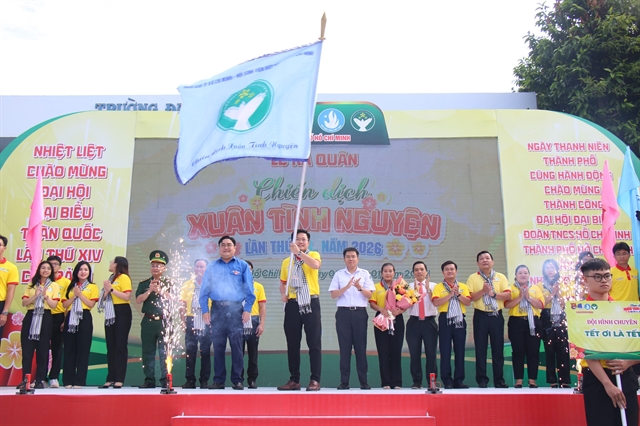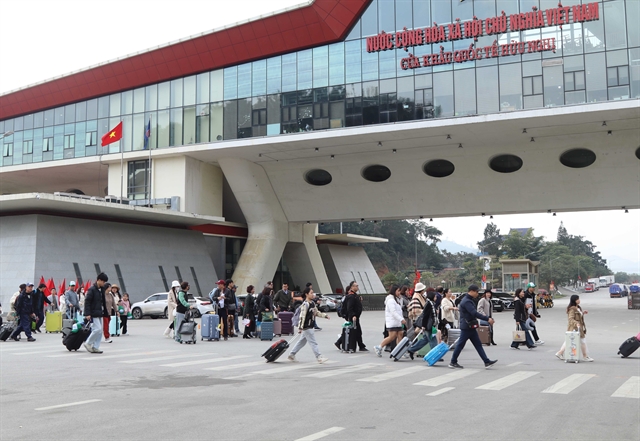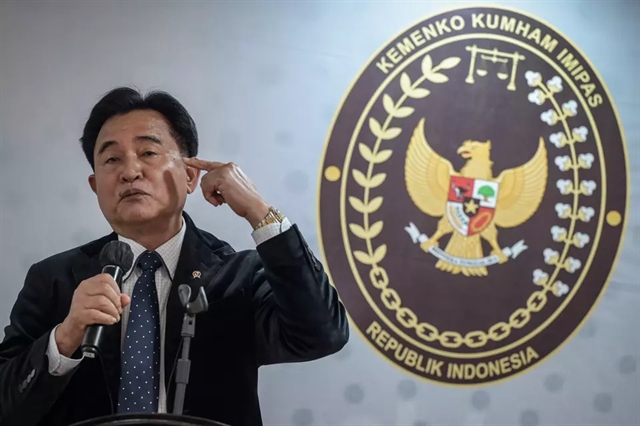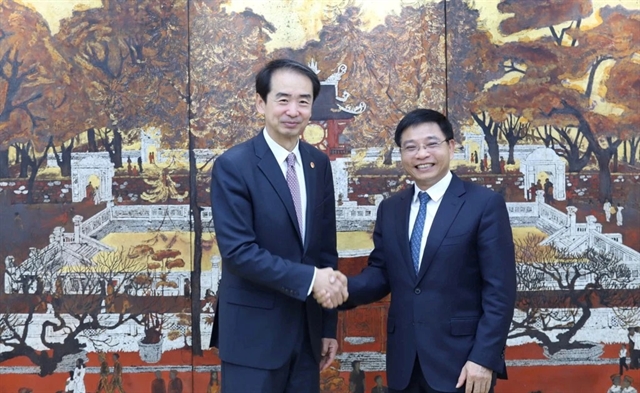 Economy
Economy
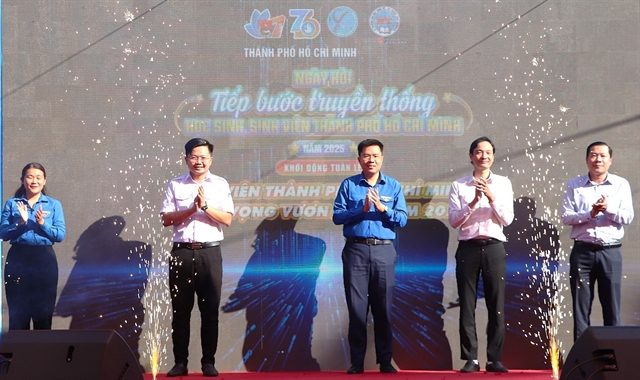
TÂY NINH – The former province of Long An (now part of Tây Ninh Province), aims to become an industrial and economic hub of the Mekong Delta by leveraging its strengths in green industry, automation, technology, and innovation.
According to the province’s then 2021-30 plan, with a vision toward 2050, it seeks to become one of the country’s leading industrial centres and a key economic contributor to the region.

|
| A part of Long Hậu Industrial Park in the former province of Long An (now part of Tây Ninh Province). The erstwhile province plans to further leverage strengths in green industry, automation, technology, and innovation to become an industrial and economic hub of the Mekong Delta. VNA/VNS Photo Minh Hưng |
Prioritising land funds for industrial development
With a goal of becoming a vibrant industrial hub by 2030, the former province has planned the development of 51 industrial parks covering a total area of 12,433 hectares, according to the erstwhile Long An Province People’s Committee.
To date, the province has established 37 parks spanning 10,015 hectares, 26 of which are eligible for investment. Of these, 20 are already in operation.
Most of the province’s industrial parks and clusters, located in districts bordering HCM City, have completed infrastructure and are ready to welcome businesses and investors.
By 2030, once all planned parks are established, the former Long An Province will become the country’s second locality with the most industrial parks after the former Bình Dương Province (now part of HCM City).
This is expected to create more opportunities for investment in the area.
The parks are allocated based on their function, strategic land position, and connectivity to gateways linking Long An with HCM City and other Mekong Delta provinces, said the former Long Province’s Department of Industry and Trade.
Tân An-Bến Lức central industrial zone enjoys connectivity with HCM City, Ring Road 3, Bến Lức-Long Thành Airport expressway, and Hiệp Phước and Long An ports.
As such, it prioritises hi-tech industries to support HCM City’s industrial development.
The northern industrial zone, which lies between Ring Road 3 and Ring Road 4 and the Asian Highway Network, focuses on supporting and processing industries.
The eastern industrial zone complements the province’s port development and downstream industries that rely on port services.
The area surrounding Long An International Port holds strong potential for industrial, service and residential growth.
The port is expected to see rising demand for import-export activities as the province’s and nearby localities’ industrial parks further develop.
An industrial park and port service zone, covering 2,000 hectares, is planned near the port to capitalise on its potential.
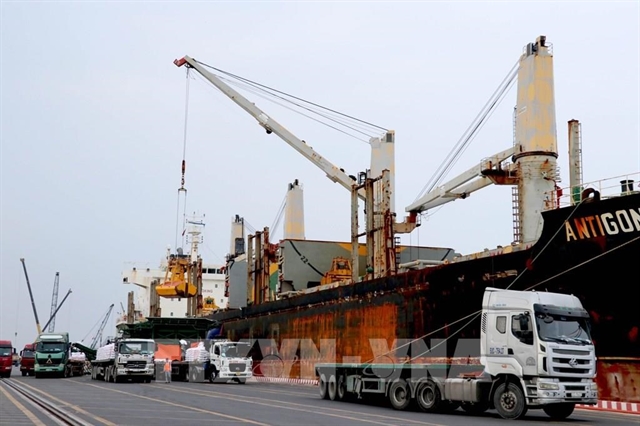
|
| Long An International Port is among the first piloting green port models in the erstwhile province of Long An (now part of Tây Ninh Province). VNA/VNS Photo Bùi Giang |
The western industrial zone is being developed as a duty-free border gate industrial zone to facilitate trade between Việt Nam and Cambodia.
Huỳnh Văn Quang Hùng, Director of the former Long An Province's Department of Industry and Trade, said that in addition to creating clean land funds to attract investment, the erstwhile province is also committed to developing its industrial parks in a green and ecological direction.
This aims to attract investors from the US, the EU, Japan, and the Republic of Korea, where environmental criteria are strict.
It also ensures that industrial projects meet environmental standards and receive green certification, Hùng added.
Measures for sustainable development
The development of ecological industrial zones in recent years has become a key strategy for ensuring the province’s industrial and economic growth is sustainable.
Experts noted that green industrial parks play a vital role in shaping Việt Nam’s sustainable development future.
An industrial park is considered ‘green’ if it is environmentally friendly and produces green products.
Trần Thiên Long, Vice Chairman of the Vietnam Industrial Real Estate Association, said “green industrial zones not only help minimise adverse impacts on the environment but also foster sustainable production, in which businesses share resources, reduce waste, and optimise energy usage.”
“Many industrial zones operating for 20 to 30 years in the country have started making incremental changes to adopt green transition and renewable energy,” Long added.
He cited Đức Hòa III-Slico Industrial Park as an example of a modern, green, clean, and environmentally friendly industrial-urban area.
Another example is the under-construction Prodezi Eco-Industrial Park, which spans 400 hectares and represents an investment of US$181 million. It broke ground in March this year.
With strict green standards, Prodezi aims to attract hi-tech and resource-efficient industries, including electronics, car manufacturing, supporting industries, logistics, data centres, semiconductors, and artificial intelligence.
The province’s green industrial ambition is supported by green logistics, including the development of green ports.
Since 2023, Việt Nam has begun piloting green port models, and Long An International Port is among the first.
Ngô Thị Thanh Vy, Deputy General Director of Long An International Port Operation and Management JSC., said building green ports is an urgent solution to protect the maritime environment and meet international commitments.
The port has been focusing on restructuring its product value chains and services, including production, exploitation, and operation, while encouraging green supply chains to reduce environmental impacts, Vy added.
It has also invested in green technologies and adopted eco-friendly delivery solutions, used solar energy, and applied energy-saving technologies, said a port manager.
According to the erstwhile Long An Provincial People’s Committee, as one of the fastest-growing industrial areas in the south, Long An has consistently focused on attracting investment in a modern, efficient, and sustainable manner.
Green and ecological industrial parks in the province not only meet advanced technological infrastructure standards but also align with the global trend towards green and sustainable development.
These industrial parks also lay the groundwork for the province to build a thriving green industry and gradually transform into a leading industrial hub and a dynamic, sustainable economic centre of the Mekong Delta and Việt Nam in the future. – VNS

